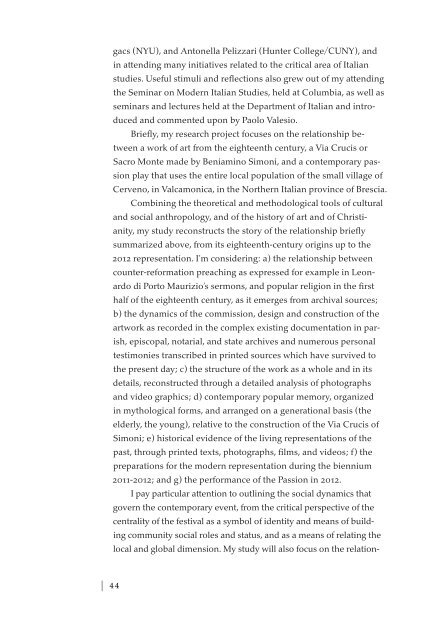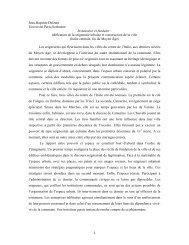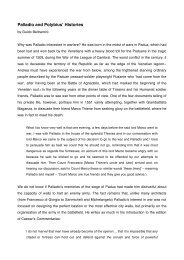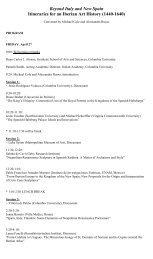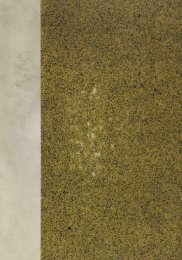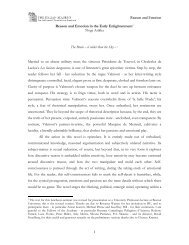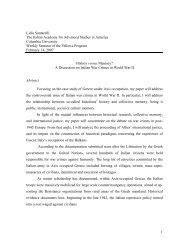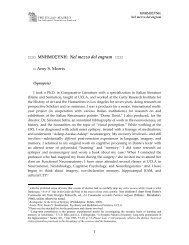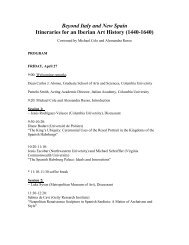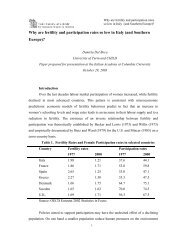2011-2012 - The Italian Academy - Columbia University
2011-2012 - The Italian Academy - Columbia University
2011-2012 - The Italian Academy - Columbia University
You also want an ePaper? Increase the reach of your titles
YUMPU automatically turns print PDFs into web optimized ePapers that Google loves.
gacs (NYU), and Antonella Pelizzari (Hunter College/CUNY), and<br />
in attending many initiatives related to the critical area of <strong>Italian</strong><br />
studies. Useful stimuli and reflections also grew out of my attending<br />
the Seminar on Modern <strong>Italian</strong> Studies, held at <strong>Columbia</strong>, as well as<br />
seminars and lectures held at the Department of <strong>Italian</strong> and introduced<br />
and commented upon by Paolo Valesio.<br />
Briefly, my research project focuses on the relationship between<br />
a work of art from the eighteenth century, a Via Crucis or<br />
Sacro Monte made by Beniamino Simoni, and a contemporary passion<br />
play that uses the entire local population of the small village of<br />
Cerveno, in Valcamonica, in the Northern <strong>Italian</strong> province of Brescia.<br />
Combining the theoretical and methodological tools of cultural<br />
and social anthropology, and of the history of art and of Christianity,<br />
my study reconstructs the story of the relationship briefly<br />
summarized above, from its eighteenth-century origins up to the<br />
<strong>2012</strong> representation. I’m considering: a) the relationship between<br />
counter-reformation preaching as expressed for example in Leonardo<br />
di Porto Maurizio’s sermons, and popular religion in the first<br />
half of the eighteenth century, as it emerges from archival sources;<br />
b) the dynamics of the commission, design and construction of the<br />
artwork as recorded in the complex existing documentation in parish,<br />
episcopal, notarial, and state archives and numerous personal<br />
testimonies transcribed in printed sources which have survived to<br />
the present day; c) the structure of the work as a whole and in its<br />
details, reconstructed through a detailed analysis of photographs<br />
and video graphics; d) contemporary popular memory, organized<br />
in mythological forms, and arranged on a generational basis (the<br />
elderly, the young), relative to the construction of the Via Crucis of<br />
Simoni; e) historical evidence of the living representations of the<br />
past, through printed texts, photographs, films, and videos; f) the<br />
preparations for the modern representation during the biennium<br />
<strong>2011</strong>-<strong>2012</strong>; and g) the performance of the Passion in <strong>2012</strong>.<br />
I pay particular attention to outlining the social dynamics that<br />
govern the contemporary event, from the critical perspective of the<br />
centrality of the festival as a symbol of identity and means of building<br />
community social roles and status, and as a means of relating the<br />
local and global dimension. My study will also focus on the relation-<br />
| 44


